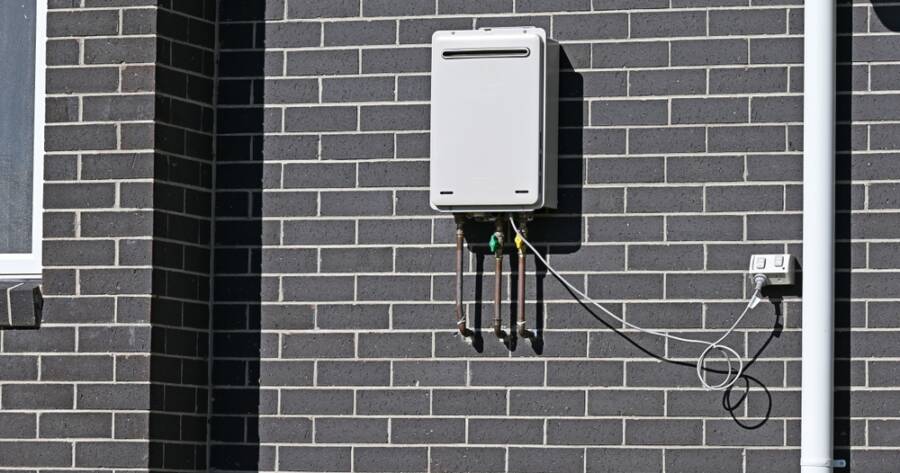Upgrading to a tankless water heater is not only a smart investment for your home’s energy efficiency but may also come with financial incentives. Many homeowners are unaware that they could potentially qualify for a tax credit when installing energy-efficient appliances. By choosing a tankless water heater, you might reduce your carbon footprint while easing the financial burden of the upgrade. Let’s explore how this tax credit works and what steps you can take to benefit from it.
What Are Tankless Water Heaters?
Tankless water heaters, also known as on-demand water heaters, provide hot water only as needed rather than storing heated water in a tank. They use advanced technology to heat water as it passes through the unit, delivering it directly to your faucet or showerhead. This design can lead to improved energy efficiency and lower utility bills over time compared to traditional water heaters.
Tankless water heaters come in gas and electric models, and their compact size makes them ideal for homes with limited space. While the upfront cost may be higher than a traditional tank water heater, the long-term savings and potential for tax credits often make them a worthwhile investment.
How Does the Tax Credit Work?
The U.S. federal government, as part of its energy efficiency initiatives, offers tax credits for specific home improvements, including the installation of tankless water heaters. These credits aim to incentivize homeowners to adopt more energy-efficient solutions, reducing overall energy consumption nationwide.
To potentially qualify for this tax credit:
- Ensure eligibility: The tankless water heater must meet energy efficiency requirements set by the Environmental Protection Agency (EPA) or the Department of Energy (DOE). Look for the ENERGY STAR label to verify compliance.
- Understand credit limits: As of the latest guidelines, the credit may cover up to 30% of the installation costs, with a cap that varies depending on the year and specific provisions.
- Retain documentation: Keep all purchase receipts, manufacturer certifications, and installation invoices. These documents are necessary when filing for the credit on your tax return.
Benefits of a Tankless Water Heater
Before committing to this upgrade, it’s essential to consider the potential benefits:
- Energy savings: Tankless water heaters only heat water on demand, reducing standby heat loss and overall energy use.
- Cost efficiency: Over time, lower utility bills can help offset the initial cost of the unit and installation.
- Durability: Many tankless water heaters have a longer lifespan compared to traditional models, potentially lasting 20 years or more with proper maintenance.
- Space-saving design: Their compact size makes them ideal for smaller homes or apartments.
While these benefits are significant, individual results will vary based on factors like water usage and the efficiency of your specific model.
Steps to Claim Your Tax Credit
Securing a tax credit for your tankless water heater involves several steps:
- Research models: Before purchasing, confirm that the model meets the required energy efficiency standards. Check the product’s specifications against current federal guidelines.
- Consult professionals: Work with a licensed contractor or installer familiar with energy-efficient upgrades. They can help ensure proper installation and provide documentation.
- File IRS form 5695: When it’s time to file your taxes, use Form 5695 (Residential Energy Credits) to claim your tax credit. Attach the necessary documentation and include it with your federal tax return.
- Stay updated: Tax laws and energy credit programs can change. Consult the IRS website or a tax professional to confirm eligibility and requirements for the year of installation.
Limitations and Considerations
While the potential for a tax credit is appealing, there are some limitations and factors to consider:
- Initial investment: Tankless water heaters can be more expensive upfront than traditional models. Ensure the long-term benefits align with your budget.
- Household needs: Larger households may require multiple units to meet demand, increasing costs.
- Installation challenges: Retrofitting a home for a tankless water heater, especially if significant upgrades to gas lines or electrical systems are needed, can be complex and costly.
Always weigh these factors carefully and consider consulting both an installer and a financial advisor to make an informed decision.
Additional Incentives to Explore
Beyond federal tax credits, some states, municipalities, and utility companies offer additional rebates or incentives for energy-efficient upgrades. Research programs available in your area to maximize savings. For example:
- State tax credits: Some states have their own programs that provide additional credits for energy-efficient appliances.
- Utility rebates: Check with your utility company to see if they offer rebates for installing a tankless water heater.
- Green certifications: Homes with energy-efficient upgrades may qualify for certifications that increase resale value.
Find the Right Fit Today!
Installing a tankless water heater is a proactive step toward improving your home’s energy efficiency while potentially benefiting from financial incentives like tax credits. While these credits can provide meaningful savings, it’s crucial to research eligibility requirements and maintain accurate records.
By understanding the benefits, limitations, and available resources, you can make an informed decision that supports both your financial goals and environmental stewardship. Always consult a tax professional or financial advisor to ensure you’re taking full advantage of the incentives available to you.
